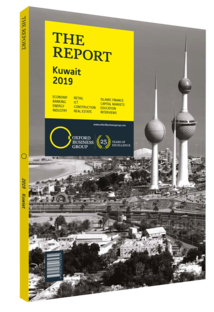Kuwait’s seaport project boosts transport connectivity and strengthens partnerships
Kuwait has historically been an important location for regional trade, although in recent years the country has seen more conflict than trade with its neighbours. However, relations are beginning to improve, which has had major implications for transport and logistics. Kuwait is planning to construct a new urban centre, Madinat Al Hareer – or Silk City – near the coast of Iraq, which it hopes will be a further boost to the country’s regional and global connectivity. The 250-sq-km city will be served by an international airport, road and rail connections, and a major seaport and trans-shipment zone. In terms of the latter, the new port, Mubarak Al Kabeer, aims to become a hub for the import and export of goods in MENA, as well as a link between Kuwait and China’s global Belt and Road Initiative (BRI). Madinat Al Hareer, the new mega-city, will incorporate earlier plans for urban expansion in Kuwait’s northern region. The current plan aims to completely transform the islands of Failaka and Boubyan, as well as some of the smaller surrounding areas, giving it the alternative title of the Five Islands project. The first phase of the plan was released in February 2019, with an estimated cost of $86bn. Transport and logistics form an important part of this phase, as it involves the establishment of the city’s basic ground infrastructure.
Mubarak Al Kabeer
Central to this is Mubarak Al Kabeer Port on Boubyan Island, which was initially launched in April 2011 with a four-stage construction plan. The site will include a container storage facility capable of handling 2.5m twenty-foot equivalent units per year when it reaches full capacity. According to the plan, the port will also contain a free trade zone, an industrial park and a number of deepwater berths, and road and rail connections will be built to connect the island to the rest of the country.
In 2014 the container facility and 16 berths were completed, and by 2017 soil treatment and a road bridge had also been finished. In November 2018 the procurement process for the key dredging and reclamation works was restarted, with a number of companies in the running that pre-qualified back in 2014, including China Harbour Engineering and South Korea’s Hyundai Engineering and Construction.
Key Players
Hyundai has already played an important part in the rollout of infrastructure in Silk City. The company completed the 37.5-km Sheikh Jaber Al Ahmad Al Sabah Causeway, which opened in May 2019. The causeway links Kuwait City to Subiyah, on the north side of Kuwait Bay, where the road continues to Boubyan Island and north to the Iraqi border.
China also has an important role in the plan. The details of the first stage were released following a visit by representatives from the Chinese National Development and Reform Commission, China Communications Construction and the China Development Bank. The port, sector players argue, could become a staging post for China’s ambitious BRI, linking maritime and land routes on the new Silk Road.
Looking Ahead
Mubarak Al Kabeer has seen a number of challenges, however. Iraq plans to develop its own port, Grand Faw, opposite the site, which could be a potential rival. It also shows that in order to successfully flourish, Mubarak Al Kabeer will need to work in partnership with its neighbours. To this end, Kuwait has been seeking to improve relations with Iraq in recent years. For example, the first Kuwait International Conference for Reconstruction of Iraq was held in Kuwait City in February 2018, and in May 2019 Kuwait offered to fund the reconstruction of one of the main border crossings with Iraq, Safwan.
Sector stakeholders argue that once the port is effectively connected to the rest of Kuwait by road and rail, it will be able to act as a new and easily expandable entry point into the country, freeing up the existing three ports in the south and offering notable potential for redevelopment. Looking beyond 2019 there will likely be continued debate surrounding this ambitious project as the basic infrastructure is rolled out.
You have reached the limit of premium articles you can view for free.
Choose from the options below to purchase print or digital editions of our Reports. You can also purchase a website subscription giving you unlimited access to all of our Reports online for 12 months.
If you have already purchased this Report or have a website subscription, please login to continue.

